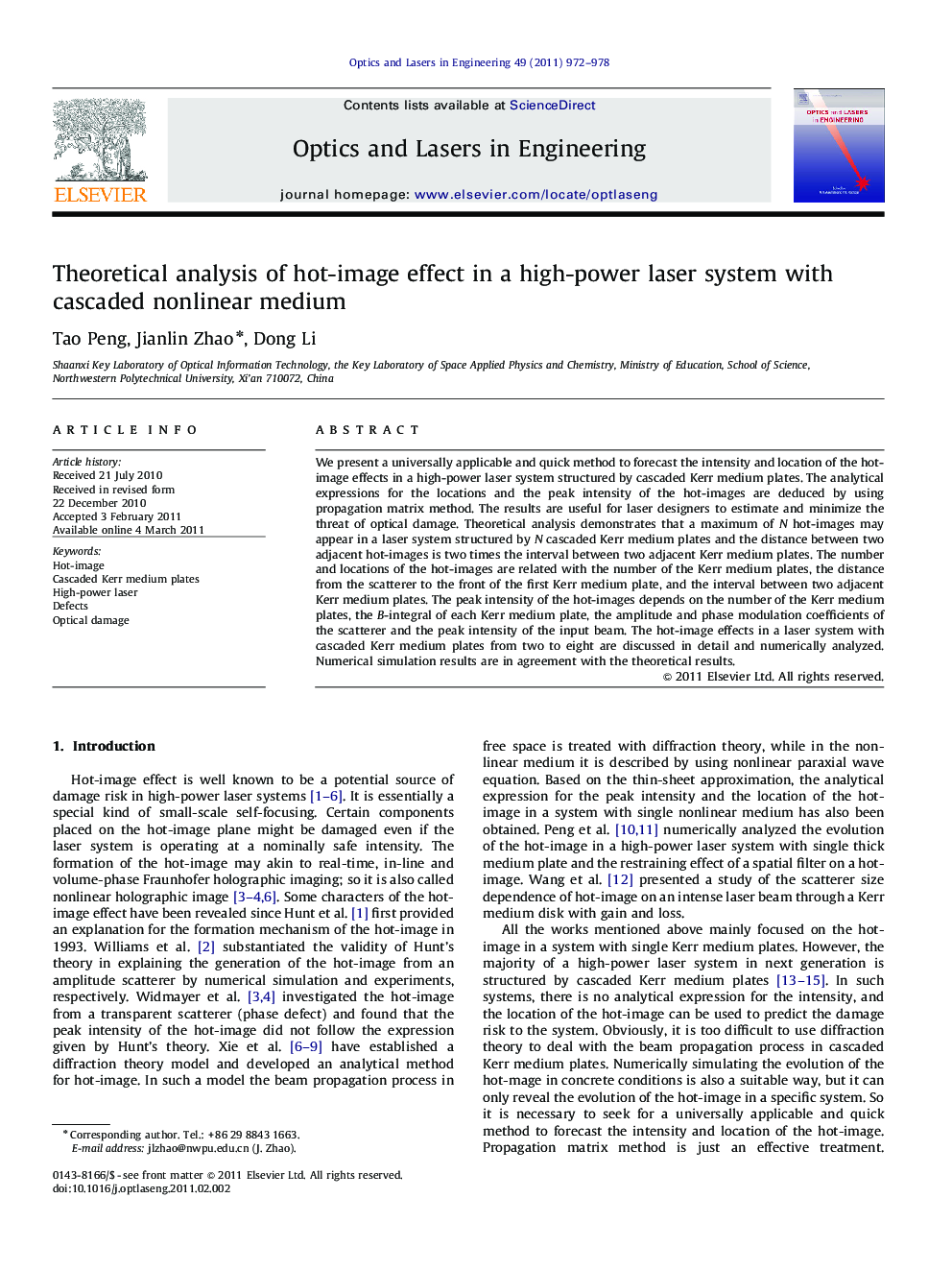| Article ID | Journal | Published Year | Pages | File Type |
|---|---|---|---|---|
| 735397 | Optics and Lasers in Engineering | 2011 | 7 Pages |
We present a universally applicable and quick method to forecast the intensity and location of the hot-image effects in a high-power laser system structured by cascaded Kerr medium plates. The analytical expressions for the locations and the peak intensity of the hot-images are deduced by using propagation matrix method. The results are useful for laser designers to estimate and minimize the threat of optical damage. Theoretical analysis demonstrates that a maximum of N hot-images may appear in a laser system structured by N cascaded Kerr medium plates and the distance between two adjacent hot-images is two times the interval between two adjacent Kerr medium plates. The number and locations of the hot-images are related with the number of the Kerr medium plates, the distance from the scatterer to the front of the first Kerr medium plate, and the interval between two adjacent Kerr medium plates. The peak intensity of the hot-images depends on the number of the Kerr medium plates, the B-integral of each Kerr medium plate, the amplitude and phase modulation coefficients of the scatterer and the peak intensity of the input beam. The hot-image effects in a laser system with cascaded Kerr medium plates from two to eight are discussed in detail and numerically analyzed. Numerical simulation results are in agreement with the theoretical results.
Research highlights► We present a universally applicable and quick method to forecast the intensity and location of the hot-image effects in a high-power laser system structured by cascaded Kerr medium plates. ► The hot-image effects in a laser system with cascaded Kerr medium plates from two to eight are theoretically discussed in detail and numerically analyzed. ► Numerical simulation results are good in agreement with the theoretical results. ► The results are useful for inertial confinement fusion (ICF) laser driver designers to estimate and minimize the threat of optical damage caused by hot-image.
